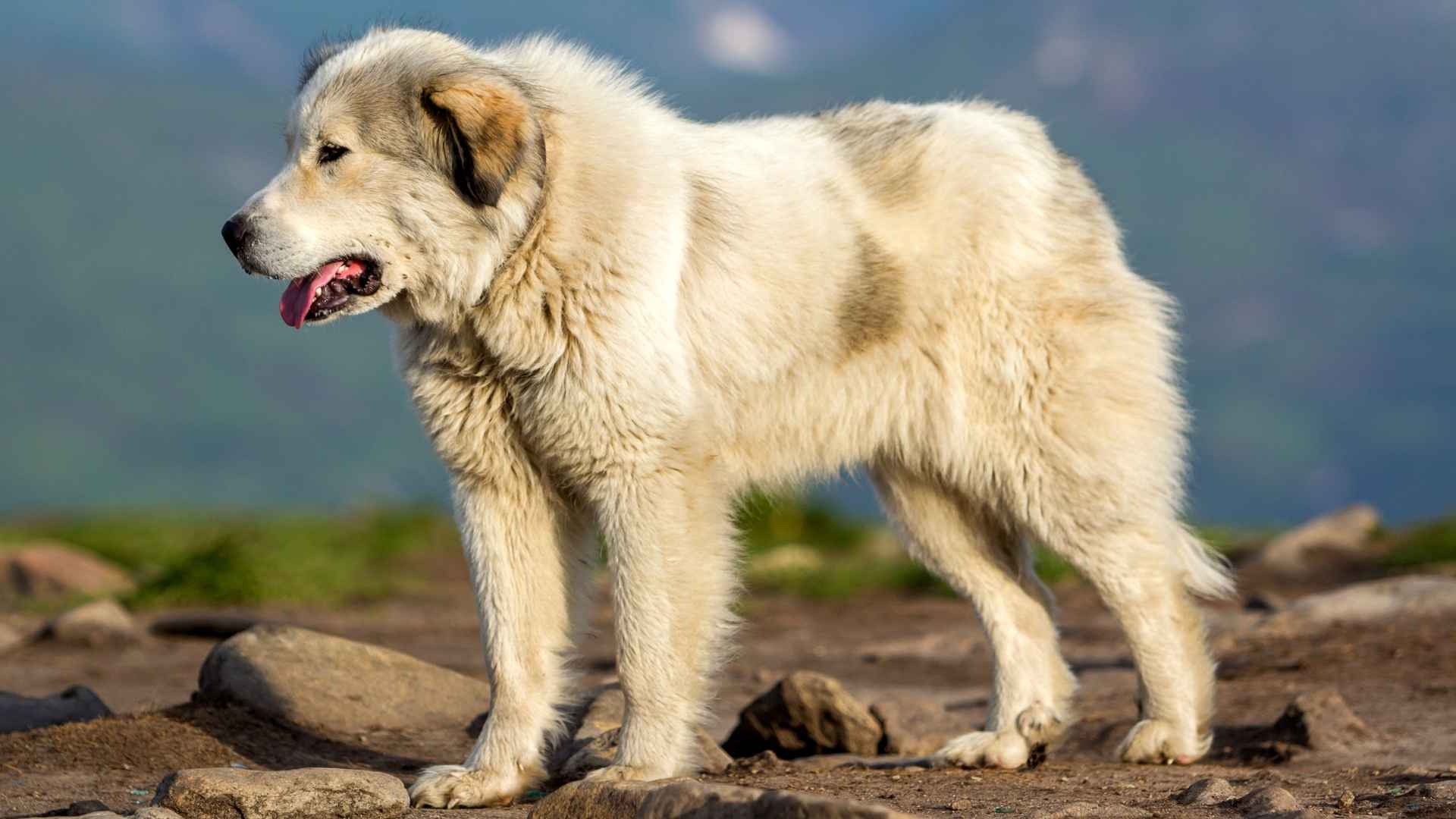Dogs are wonderful and loyal companions who make us feel safe. Several dog breeds are born to protect. Their strong protective instincts, bold temperaments, and deep loyalty make them effective guard dogs.
When we think of guard dogs, we usually imagine high-energy breeds who need plenty of exercise and mental stimulation to stay happy and content. But such breeds might not be well-suited for dog owners who work full-time, have a family, or are too busy to take out a lot of free time.
Fortunately, there are some calm guard dog breeds with manageable amounts of energy as well. You have to invest time in their training, but once they have been trained, they offer companionship and security along with the peace of mind.
Here are the top 7 guard dog breeds that don’t need high physical training.
Guard Dog Breeds That Don’t Need High Physical Training
1. Great Pyrenees
The Great Pyrenees were originally bred to protect livestock against predators like wolves and bears. Their intimidating size, courageous nature, and booming bark make them one of the most protective dog breeds.
WebMD explains that Great Pyrenees are guard dogs who protect their family by roaming around carefully. Their intelligence, independent nature, easygoing personalities, and sharp instincts make them perfect protection dogs.
Great Pyrenees are calm canines who form strong bonds with their humans. But they are suspicious of strangers. These highly perceptive dogs detect subtle changes in the mood of their owners. They need early training and a great deal of socialization to behave well.
2. Saint Bernard
Saint Bernards are the gentle giants who are fiercely loyal to their families. They are very powerful, extraordinarily muscular, and imposing canines. Their mere presence is enough to deter intruders. They were originally bred to assist in search and rescue operations.
These protective guard dogs are quick learners, but have an independent streak. They may not be interested in doing what you tell them to do without motivation. The positive reinforcement approach works wonders for training this breed. Saint Bernards are emotionally wired to sense human emotions.
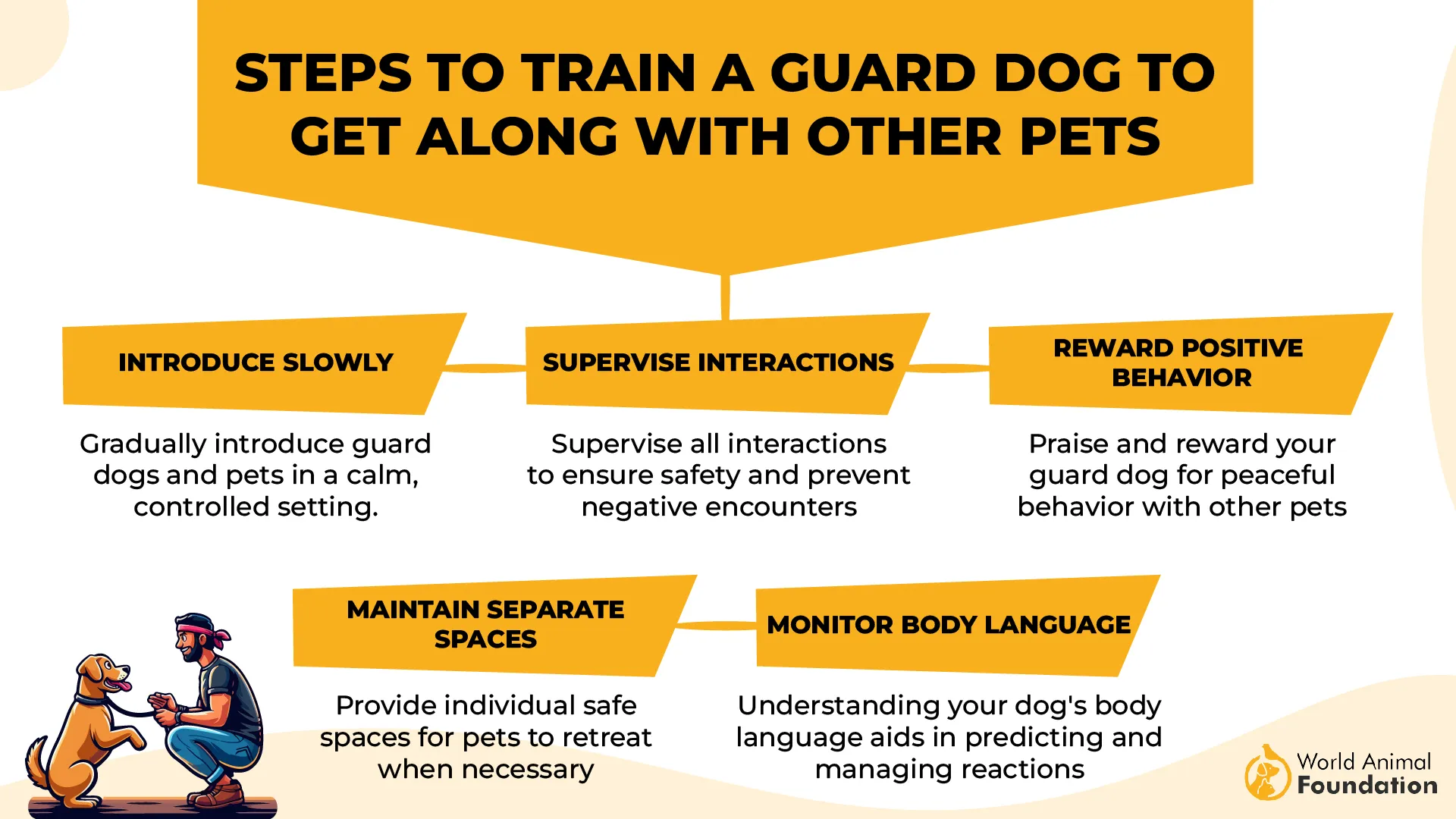
Despite their large size, Saint Bernards require moderate exercise of around 60 minutes every day, explains PDSA. Physical activity includes long walks and gentle walks. Avoid strenuous activities like running or jumping.
3. Great Dane
The “Apollo of Dogs,” the Great Danes, are the real sweethearts. Great Danes make effective guard dogs due to their strong protective instincts. These affectionate dogs tend to do well around children, but are recommended for families with older children due to their large size.
Great Danes were used in history as boar hunters and protection dogs. These courageous dogs are generally friendly but will do their best to protect their owners. They are immensely loyal and will bark to alert their family if they sense any danger.
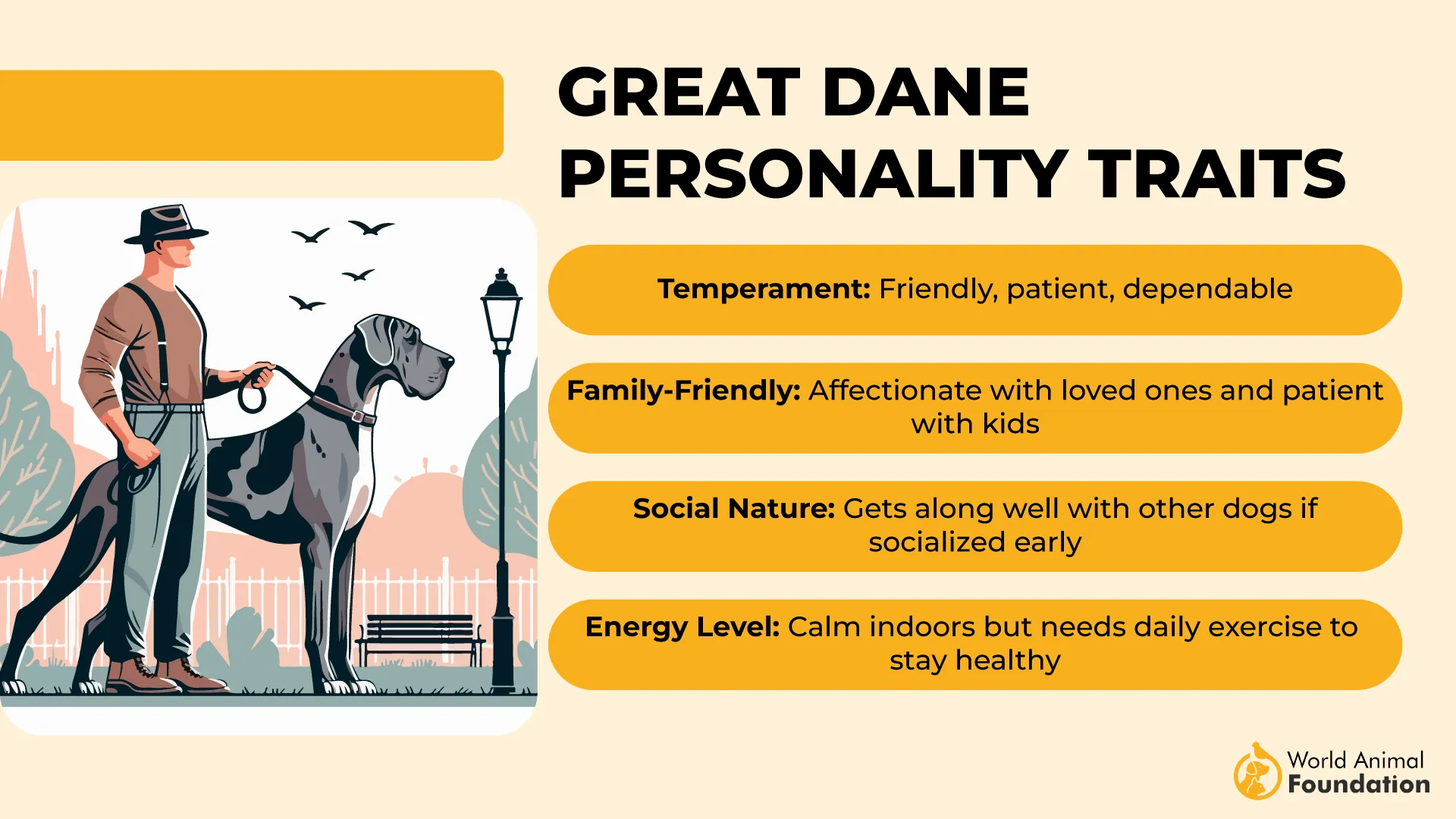
Great Danes are quite adaptable when it comes to activity levels. They will happily accompany you on walks, hikes, and jogs, but they also enjoy lying around the house. Great Danes need at least two hours of activity every day that includes long walks and play sessions.
4. Komondor
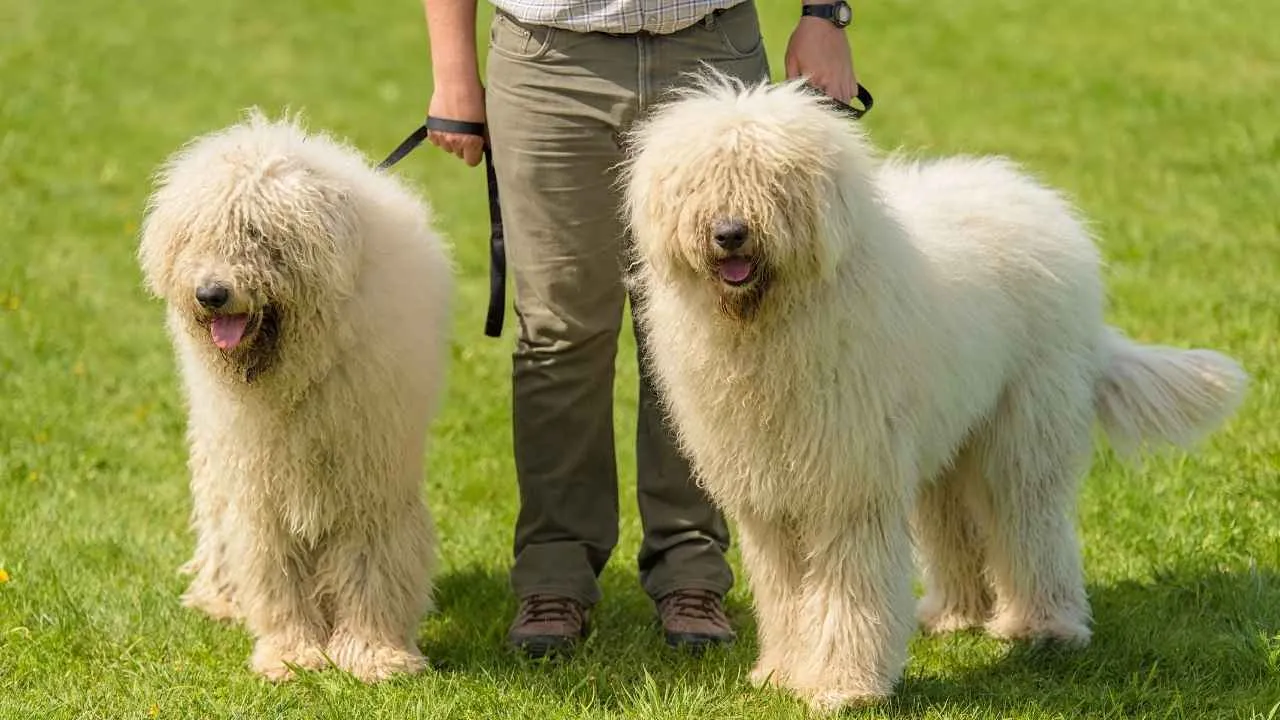
Originally bred as livestock guardians, Komondor are known as “mop dogs” due to their distinctive coat. They get along well with housemates and have strong protective instincts. Proper socialization is needed to make them well-behaved around other dogs.
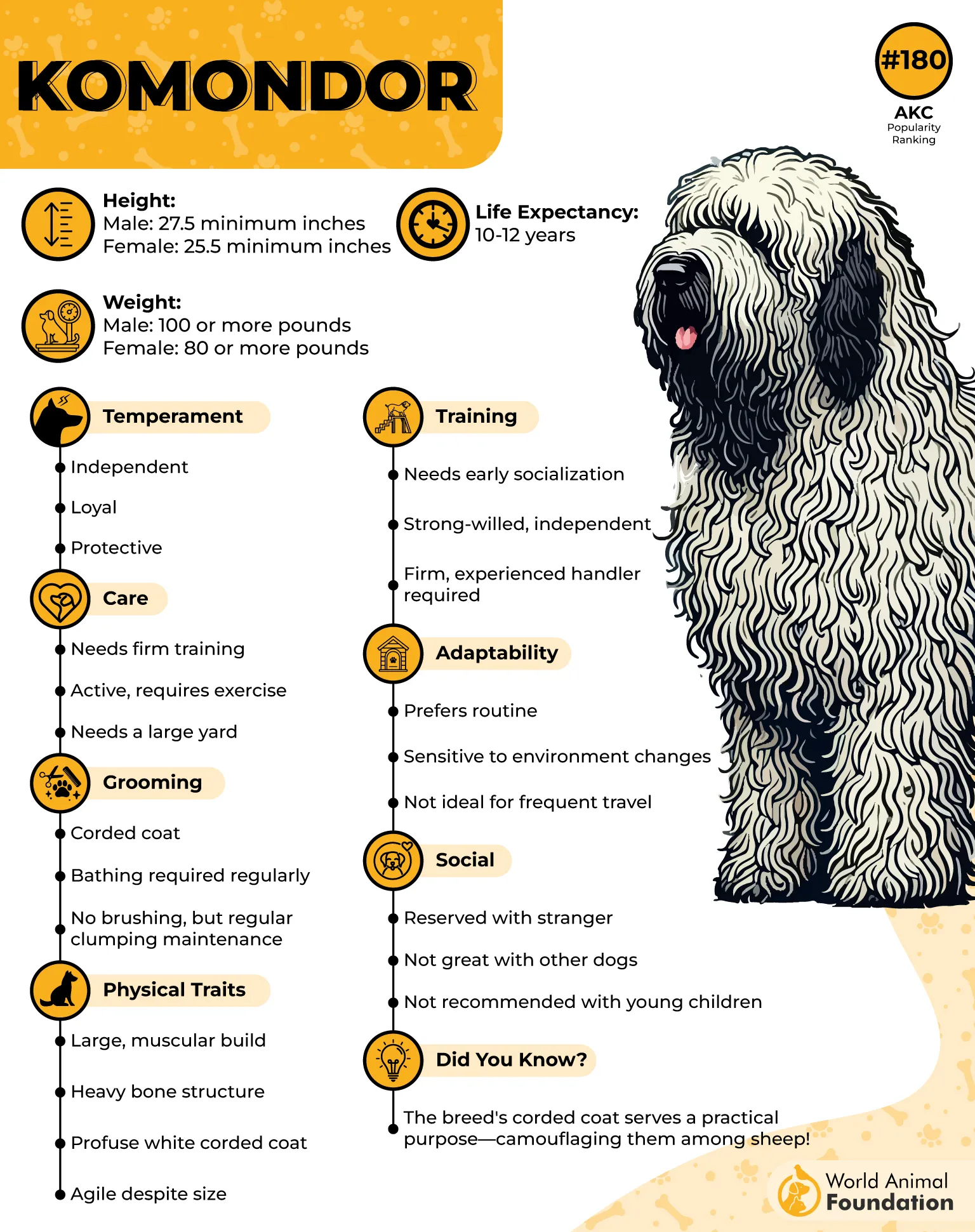
These affectionate dogs are generally well-behaved around children. The American Kennel Club describes them as brave, loyal, and dignified fellows. Komondors are big dogs with heavy bones and a deep chest. Their agility and strength make them one of the most protective dog breeds.
Komondors are independent thinkers and can be a bit difficult to train. Komondors need around 20 to 40 minutes of exercise every day. These excellent guard dogs have a deep and loud bark, which can echo through the entire neighborhood, so your neighbors might not like your Komondor.
5. Mastiff
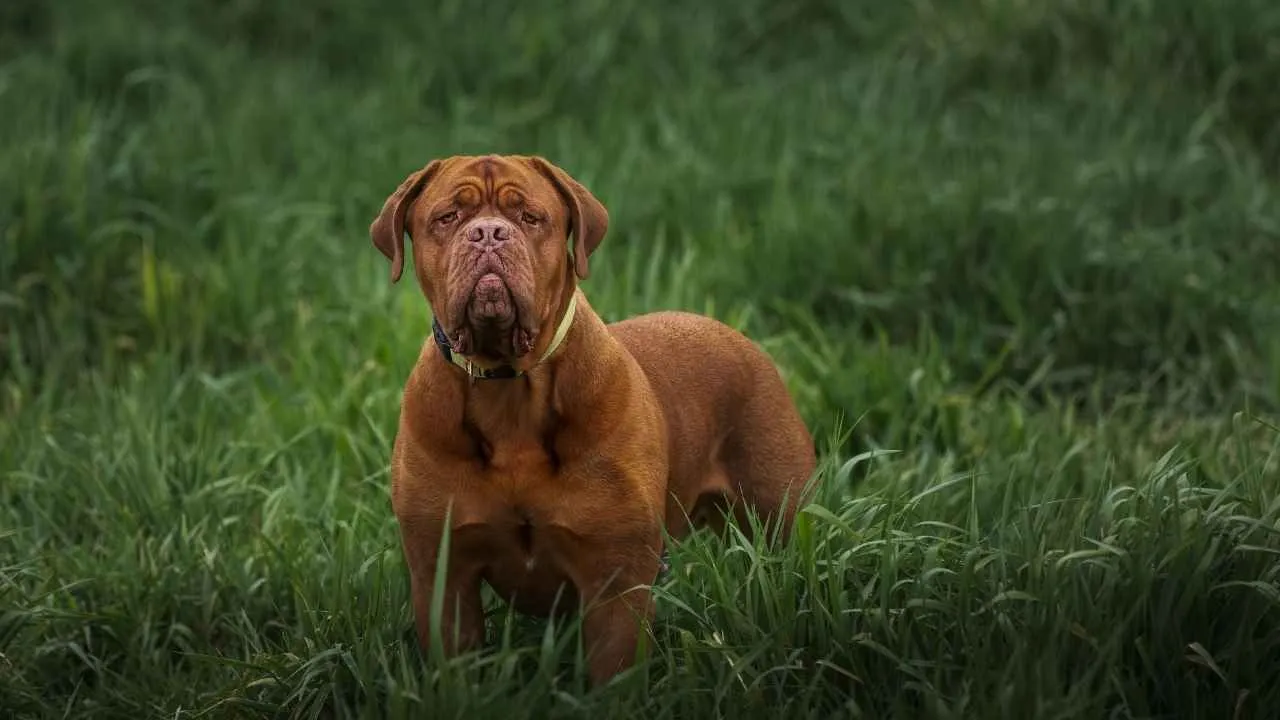
Mastiffs are large and powerful dogs with low energy levels. They are affectionate towards their family members, but are a bit wary of strangers. These calm and placid dogs are quite protective of their loved ones.
Mastiffs, belonging to the working group, make excellent guard dogs. Mastiffs are so low in energy that they are well-suited for apartment living despite their large size. They also do well in households with older kids.
Around two long walks per day is enough to satisfy their energy needs. Mastiffs are so lazy that they plop down when they get tired. So, make sure you do not walk them too far. If you train your Mastiff and keep them in proper condition, they excel at canine sports like carting, tracking, and obedience.
6. Newfoundland
Newfoundland or Newfie is a powerful and large dog breed known for its gentle and loving disposition. They are friendly and sweet-natured and greet the new faces quite well. But it does not mean they don’t do well as guard dogs.
Despite their imposing size, Newfies are one of the dog breeds that don’t need high physical training. Their protective nature and unwavering loyalty make them great guard dogs. These courageous dogs worked on fishing boats, and one of their duties was to rescue drowning sailors.
Newfoundland dogs have moderate energy levels. They need around one hour of daily exercise or physical and mental stimulation. Newfies are avid swimmers and enjoy activities like swimming, hiking, long walks, and pulling.
7. Greyhound
Greyhound is a sighthound that greatly relies on speed and agility for tracking prey. PetMD explains that these active dogs require an active lifestyle to stay physically and mentally stimulated. At home, Greyhounds have a calm demeanor, and they are the ultimate couch potatoes.
Greyhounds are highly affectionate towards their family members, but are a bit shy towards strangers. These independent dogs often show cat-like behavior. Greyhounds do not get overly excited around new people. As long as they are getting enough exercise, they can spend the rest of the day lying in their favorite spot.
Greyhounds are one of the fastest animals on Earth. A Greyhound has set a world record of running at the speed of 41.83 miles per hour, as mentioned by the AKC.
Greyhounds have a muscular, streamlined body, well-suited for running fast. Their natural alertness and physique allow them to serve as effective guard dogs. Greyhounds have a strong prey drive and are not ideal for homes with small pets like rabbits.
Conclusion
Most guard dog breeds are known for their high physical training needs. It can be a bit disappointing for dog lovers who want to adopt guard dogs but cannot fulfill their high exercise needs. Surprisingly, some guard dog breeds don’t need high physical training, and that becomes a good option for busy people.
The dogs mentioned in the above article offer a good choice for people with busy lives. These dogs offer immense protection with minimal needs. These dogs stay content in their corner and fulfill their guarding duties pretty well.


